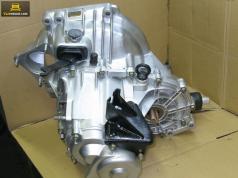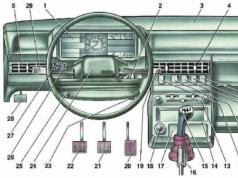Such work as replacing the stove radiator with VAZ 2110 and 2112 is well known to the owners of these cars. Usually, the need for replacement is associated with not too high quality parts. In itself, this work is not difficult, so there should not be any special problems with its implementation. Tools for this will require the simplest, which are available in every garage. When carrying out repairs, please note that there are 2 types of stoves. They differ slightly from each other, but there are some differences in the principle of operation and the method of attachment. Below we will consider the main nuances of these radiators.

Reasons for repair
Replacing the stove radiator with VAZ 2110 and 2112, necessary in case of breakdown. Most often, antifreeze leaks from the system. This is determined by the presence of a pool of coolant underfoot. Such a breakdown is not only not economically profitable (you have to add antifreeze, which is not cheap), but is also dangerous to health. The coolant evaporates and produces a toxic vapor. Finding the problem directly on the car is quite difficult. The stove must be removed from the machine.
Another reason is the poor quality of the stove. During operation, the radiator can become clogged. At the same time, the problem is revealed at the most inopportune moment for this. This usually happens in winter, when the stove stops heating the interior. Due to the blockage, heat transfer is disturbed; in case of severe pollution, antifreeze may not enter the radiator at all. In this case, it will need to be replaced or cleaned, but you still have to remove the part.

Varieties of stoves
In fact, there are only 2 types of radiators. They differ mainly in the way of fastening:
- Old sample (up to 2003);
- New sample (since 2003).
Replacing the old-style stove
You should start with preparation. Put the car on the handbrake. Disconnect the battery, you will hardly work directly with an electrician. But, there are enough wires under the hood, so it is better to turn off the power. Remember to drain the antifreeze. The stove is an element of the cooling system, so the system will still be depressurized.
After preparation, you can proceed to replace:
- Remove the rubber seal from the wind pad;
- The fasteners are unscrewed, and the frill is removed;
- Dismantle the visor cover. To do this, unscrew the nuts with screws located along its edges;
- The hose is removed from the front glass washer. It should be pushed aside, otherwise it will interfere with further work;
- Unscrew the wiper mountings;
- The cover plate (visor) is finally removed;
- Metal clamps are removed from the stove body. They are carefully considered, if corrosion is visible on them, then they need to be replaced with new ones;
- The filter in the cabin is removed, which is attached to the heating radiator with screws;
Turn off the fan. To do this, throw off the positive connector, and unscrew the nut from the negative terminal (on the body); - Unscrew the 3 screws securing the stove cover;
- We loosen the hose clamps. We remove the radiator.

Replacing a new type of stove
To begin with, standard preparatory work is performed. They completely repeat the steps taken when replacing an old-style radiator. Elastic bands and other small parts are removed in the same way.
Removal takes place in the following order:
- Dismantle the supply hoses. Also remove the steam hose. It is enough to disconnect it from the stove. They are all mounted on clamps;
- Chips are removed from the fan;
- The geared motor is disconnected from the power supply;
- 3 self-tapping screws are unscrewed, securing the gear motor;
- We find the places where the radiator is attached to the body, and unscrew the screws;
- We unscrew the screws from the filter cover. We extract it;
- Unscrew the screws securing the radiator halves;
- Now you can pull out the heater itself. We take out the left part first, then the right one;
- Opening the brackets, remove the flap.







